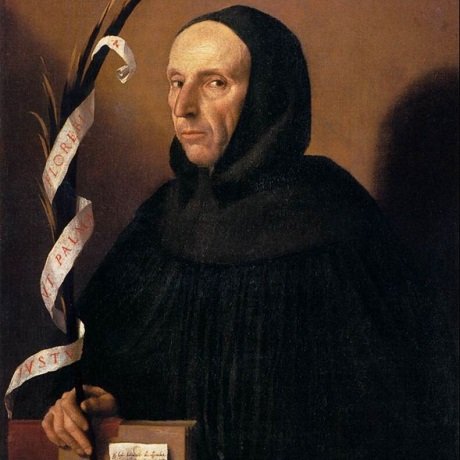Girolamo Savonarola
On May 23rd, 1498, three former friars of the Dominican Order were burned at the stake in Florence’s Palazzo della Signoria. Only a short time ago, one of these unfortunate men, Girolamo Savonarola, had been the most powerful man in Florence, coming to power following the expulsion of the Medici family. Claiming to possess the gift of divine prophecy, the puritanical friar had attempted to purge the city of sin and vice in the hope of refashioning it into a “New Jerusalem.” And although he failed in this quest, his radical doctrine prefigured the Protestant Reformation in ways theologians still debate to this day.
This is the story of Girolamo Savonarola.
Cover Image: Portrait of a Dominican, presumed to be Savonarola. Painting by Moretto da Brescia, 1524.
Episodes (listed in reverse order)
Savonarola Preaching Against Prodigality painting by German artist Ludwig von Lagenmantel, 1879
Bibliography
Bartlett, Kenneth. Florence in the Age of the Medici and Savonarola, 1464-1498: A Short History with Documents. Hackett Publishing, 2018.
Landucci, Luca. A Florentine Diary from 1450 to 1516. Columbia University Press, 1927.
Martines, Lauro. Fire in the City: Savonarola and the Struggle for the Soul of Renaissance Florence. Oxford University Press, 2005.
Savonarola, Girolamo. A Guide to Righteous Living and Other Works. Toronto Center for Reformation and Renaissance Studies, 2003.
Strathern, Paul. Death in Florence: The Medici, Savonarola, and the Battle for the Soul of a Renaissance City. Pegasus Books, 2016.
Villari, Pasquale. Life and Times of Girolamo Savonarola. University of the Pacific Press, 2004.
Weinstein, Donald. Savonarola: The Rise and Fall of a Renaissance Prophet. Yale University Press, 2011.


Savonarola and his companions are brought before a tribunal and sentenced to death. Despite being formally condemned as a heretic, the friar's legacy would continue to cast a long shadow over Florentine politics in the years to come.